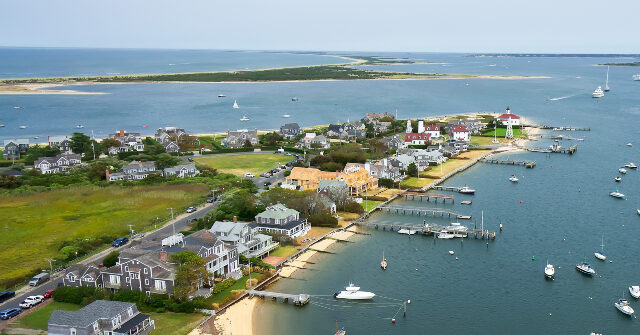As part of a program initiated this year, Nantucket, Massachusetts, has been using its sewage “surveillance program” to get a handle on the amount and types of drug use on the island, where population quadruples to 80,000 in the summer months with tourists and seasonal residents.
Conducted at the island’s Surfside wastewater treatment facility, the testing found cocaine levels about 50 percent higher than the national average, according to the town and county’s website.
Labeled the “High Risk Substances Summary for Nantucket Sewer Department,” the testing revealed below-average levels of fentanyl, the powerful opioid that has caused thousands of overdoses in the United States.
The surveillance program tests for a range of substances besides cocaine, including nicotine, methamphetamine, and other prescription and illicit opioids. The idea and technology of testing the sewage was developed during the COVID-19 pandemic to test for the virus.
According to the program’s official description:
While the goal is not to estimate exact numbers of users, the data will help identify concerning patterns, such as sustained increases in certain drug markers, that can guide timely, evidence-based interventions. For example, if a prolonged spike in stimulant use is observed, the Town can coordinate educational outreach, screening efforts, or peer-led recovery support tailored to that substance.
While nicotine use was typical of regional and U.S. averages, other noteworthy findings were the levels of crystal meth and xylazine, an animal tranquilizer that authorities say is often mixed in with other drugs. Both those drugs showed very low levels.
“What’s shocking is that there is a low level of trace items,” Randolph Rice, a legal analyst, told Fox News Digital. “For example, there is very little fentanyl or xylazine…Oftentimes, these substances are added to [drugs] to make them more potent, but they also make them deadly. So what it’s telling us in Nantucket, is they’re getting the pure stuff.”
Back in May, a local news outlet reported what it called the largest cocaine bust in the island’s history when more than five pounds of the drug were seized during the arrest of a suspect from the Dominican Republic who has a green card allowing him to live legally in the United States.
One activity that could distort drug use trends determined from sewage is the pressure of law enforcement.
David Katz, a former DEA special agent, told Fox News Digital that cocaine concentrations could also come from a dealer flushing a large stash to avoid being busted during a raid.
“We used to shut the water off before we did search warrants because of that same thing,” he said.
The other cause, he said, would be the toilet flushes from cocaine users as the drug leaves their system.
Others dismissed the idea of drug busts being the culprit in Nantucket’s case.
In examining the sewage charts, while the cocaine levels fluctuate throughout the summer, they remain consistently above the regional and national averages and do not appear tied a singular event.
Contributor Lowell Cauffiel is the best-selling author of Below the Line and nine other crime novels and nonfiction titles. See lowellcauffiel.com for more
Breitbart News
Read the full article .


